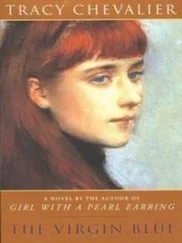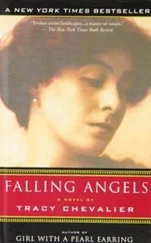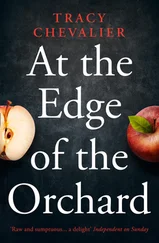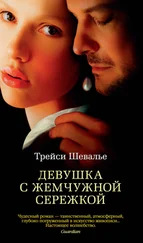As they worked, he asked her what was wrong with William Lobb. Mrs. B. paused, leaning on her shovel. “Spanish disease, of course. What do you think he got up to down in South America? It wasn’t all plants.” She gestured at his crotch. “Mind you don’t get it yourself, with your trips up to French Creek. It’s called the French disease too, you know!” Mrs. B. enjoyed teasing him about Molly.
She stopped chuckling, however, when she noted Robert’s stricken expression. “Don’t worry about him, man-he’ll be up in a day or two. I’ve seen some suffer much worse than him.”
She was right-William Lobb was up the next day. He said nothing about his outburst at the eating house; nor did he repay Robert for his meal. Instead he announced that they would go south to collect flowering plants. “Yellow flowers, that’s what Veitch says the English want now. Poppies, violets, primroses. They’ve already got ’em in purple, but now they want yellow Californian poppies and violets to plant near their Californian conifers. You know about trees-now it’s time I taught you about flowers.”

They spent the next eighteen months collecting a wide variety of flowers, shrubs and trees for Veitch to sell to English gardeners hungry for novelty, traveling as far south as Santa Barbara and as far north as the Oregon mountains. Or rather, Robert went north: William Lobb was less willing to go to more remote areas. Physically he suffered from joint pains and numbness and blinding headaches. Mentally he was at times confused and forgetful. Emotionally he was temperamental, sometimes shouting at Robert but most often directing his anger at Veitch, who he complained didn’t appreciate his skills as a collector. “Without me Veitch Nurseries would be nothing ,” he ranted. “They’d be selling only roses and daffodil bulbs and box hedges. The most exotic plant they’d offer would be a subspecies of Sambucus nigra ! I have brought them rhododendrons and ceanothus. I have brought them the fuchsias you see in every decent British garden. I have brought the monkey puzzle and the redwood. And what do I get for my trouble? Complaints and demands!” Yet he also fretted when he didn’t receive letters from Veitch asking for more seeds and specimens. “He’s found someone else,” he declared. “Bridges or Beardsley or some other biddable lackey who will work for him for less money.”
Robert learned not to listen, and to offer to go alone on the more strenuous trips. Sometimes Lobb agreed. Other times, though, his paranoia extended to his assistant and he became convinced Robert was trying to take over his business. Then he would insist on coming along, though he rode more slowly now, sometimes hiring a wagon instead of riding the buckskin mare. Though he learned a great deal from his employer, Robert was disappointed that they never rediscovered the charmed magic of that first trip they had taken together from Calaveras Grove to San Francisco, when Robert was the sponge and Lobb the river of knowledge he soaked in.
After a year of increasingly slow and difficult travels, William Lobb decided to remain in San Francisco at Mrs. Bienenstock’s and focus on the packing and shipping while Robert did the collecting. It was Mrs. B. who suggested the arrangement. “Jesus H. Christ,” she interrupted Lobb one day as he sat in her kitchen complaining of the aches and pains he’d suffered from their latest trip to Monterey. “Stay here and do the packing and let the young one run all over California for you! Don’t you always say the success of collecting is in the packing? You’re the boss-take the most important role and stop moaning!”
Lobb was silent for a moment. He still showed Mrs. B. more respect than he did anyone else, his mania miraculously abating whenever she gave him a look or made a sharp remark. “Maybe you’re right,” he agreed at last.
Mrs. B. raised her eyebrows. “Maybe?”
The arrangement suited Robert too. He could travel alone, visit Molly now and then, and enjoy small doses of William Lobb, tempered by Mrs. Bienenstock. He was, almost, happy.

The British mania for giant sequoias showed no signs of dying down, and Robert made regular trips up to Calaveras Grove to collect seeds. Whenever he had the chance, he took a few days to explore the surrounding area. He never told anyone-not William Lobb, or Billie Lapham, or Mrs. Bienenstock, or Molly-but he was looking for more sequoias. Lobb himself had suggested early on that there could be more growing somewhere along the mountain range at a similar elevation, but now his illness had eroded his adventurous spirit and he preferred to collect at known places.
It took three years of searching, but in the late summer of 1856 Robert at last stumbled upon more giant trees. He was picking his way through thick woods only five miles southeast of Calaveras Grove when the gray began to snort and whinny, then kick out with his hooves. Robert assumed he had seen a snake, but the horse was looking ahead rather than down. He dismounted and held tight to the reins, his heart beating faster. Though he couldn’t see anything-no telltale auburn presence in the distance-Robert sensed a difference in the woods ahead. It was quieter, with fewer birds and less rustling of leaves.
He dragged the gray through the trees until he saw the first sequoia, then tied up his horse with its back to the grove and its nose in a bag full of oats, and went to explore. Here were dozens of giant sequoias, more spread out than at Calaveras Grove, and even bigger and more beautiful. There were no raked paths or signs or laughing tourists spilling out of saloons or standing on giant stumps. He was amazed that no one had found the grove before him, though he had learned in his travels that people tended to stick to well-worn paths rather than push into new places.
Robert was the trees’ only witness, and he planned to keep it that way. He would not collect cones here: the grove would remain untouched, as trees should be. James Goodenough would have approved. It was even worth paying Billie Lapham for the privilege of continuing to collect at Cally Grove if that would keep these sequoias secret. Robert had come to like Billie Lapham, but he knew the businessman would want to lay claim to the new grove and expand his business if he could.
The next day he continued on to Calaveras Grove. As he arrived, passing the Two Sentinels that marked the beginning of the grove, he saw that there was dancing on the Great Stump. Indeed, there had been dancing on it every time Robert visited, and he had grown used to the sight, though he still refused to set foot on the stump himself. Californians loved to dance more than any other people he had met. This was the case both of gold rush miners and of Californios up from Mexico. It seemed once they arrived they caught two fevers: gold and dance. There was dancing everywhere, even when there were no women to dance with. At the mining camps he’d lived in, after a long day bent over pans, the men danced with each other or did a solo jig to a fiddle and a guitar.
Today there were just two couples, dancing a fast polka to the whistling of one of the men. They danced with their partners; then, after a signal known only to themselves, switched. Robert was always surprised by this unspoken fluidity. He was not a dancer. Despite Molly’s attempts to teach him a few simple steps, he had never been able to join dances after supper when the tables and chairs were pushed back, or outside by the fire. Instead he had stood or squatted on his heels and watched.
Читать дальше
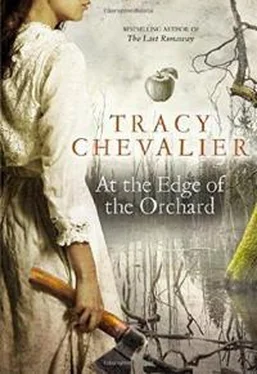



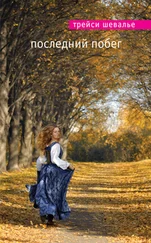
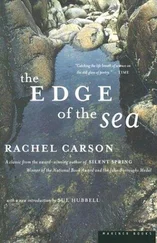
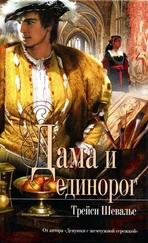
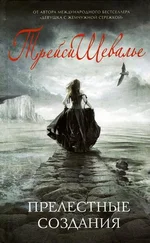
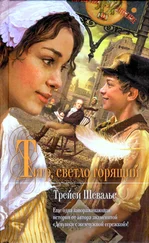
![Трейси Шевалье - Тонкая нить [Литрес]](/books/386177/trejsi-shevale-tonkaya-nit-litres-thumb.webp)
